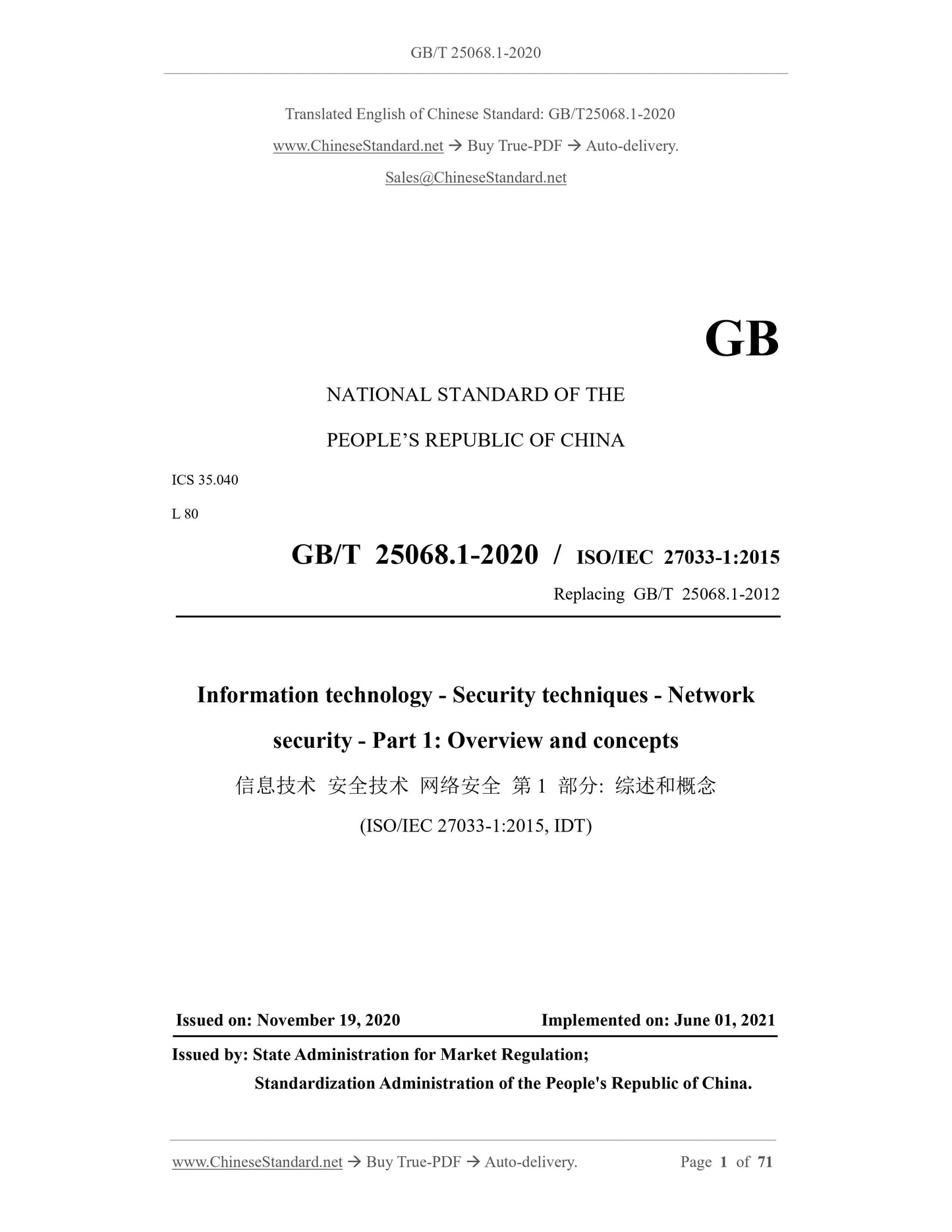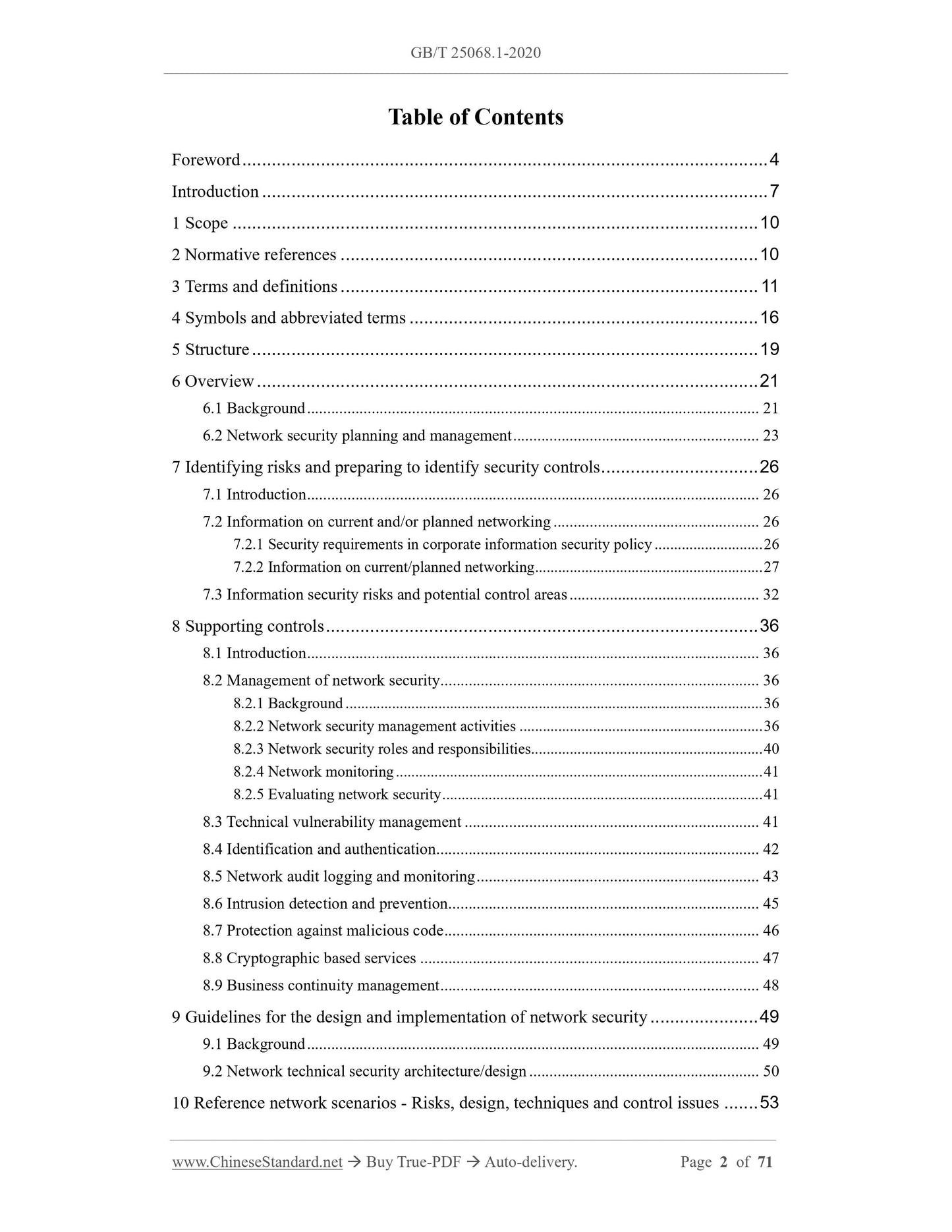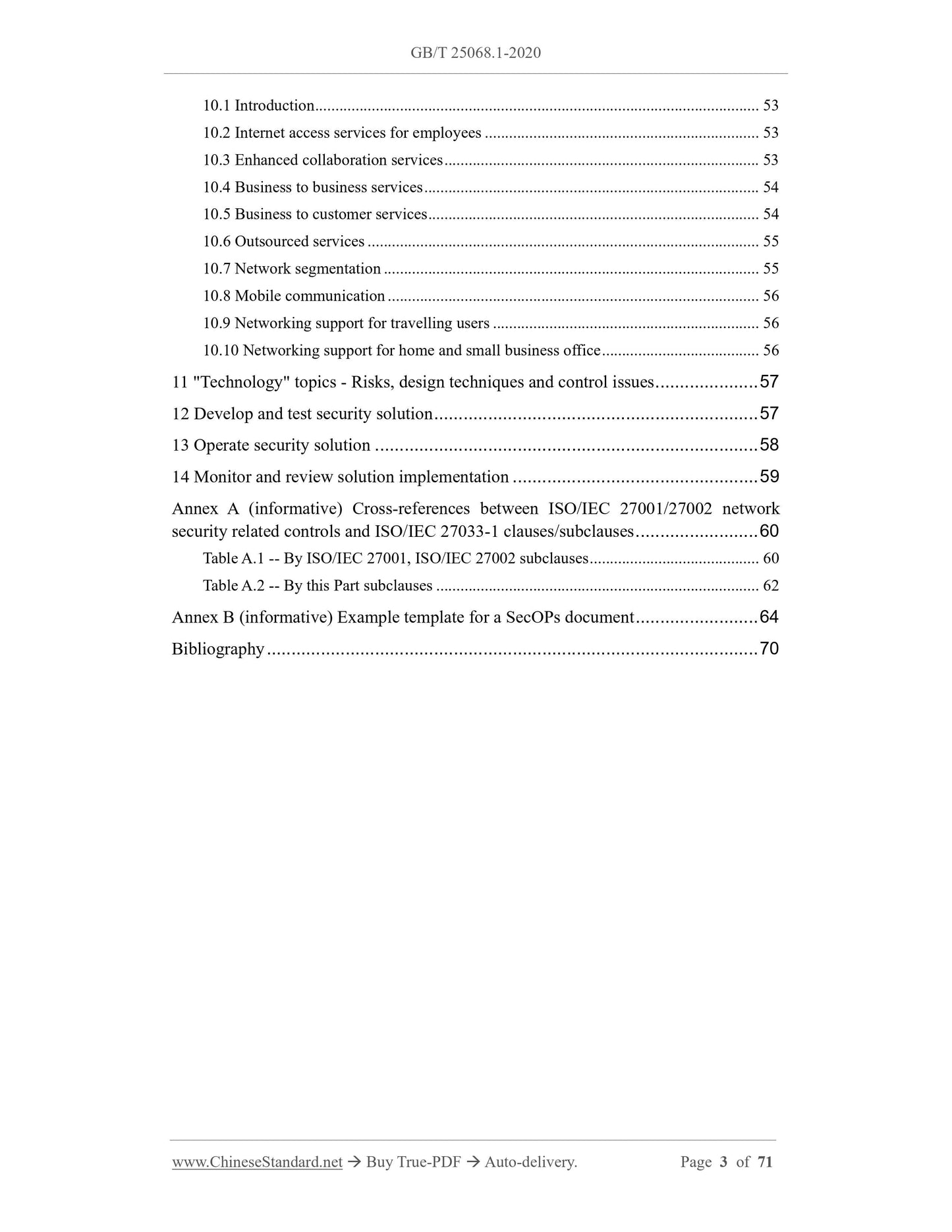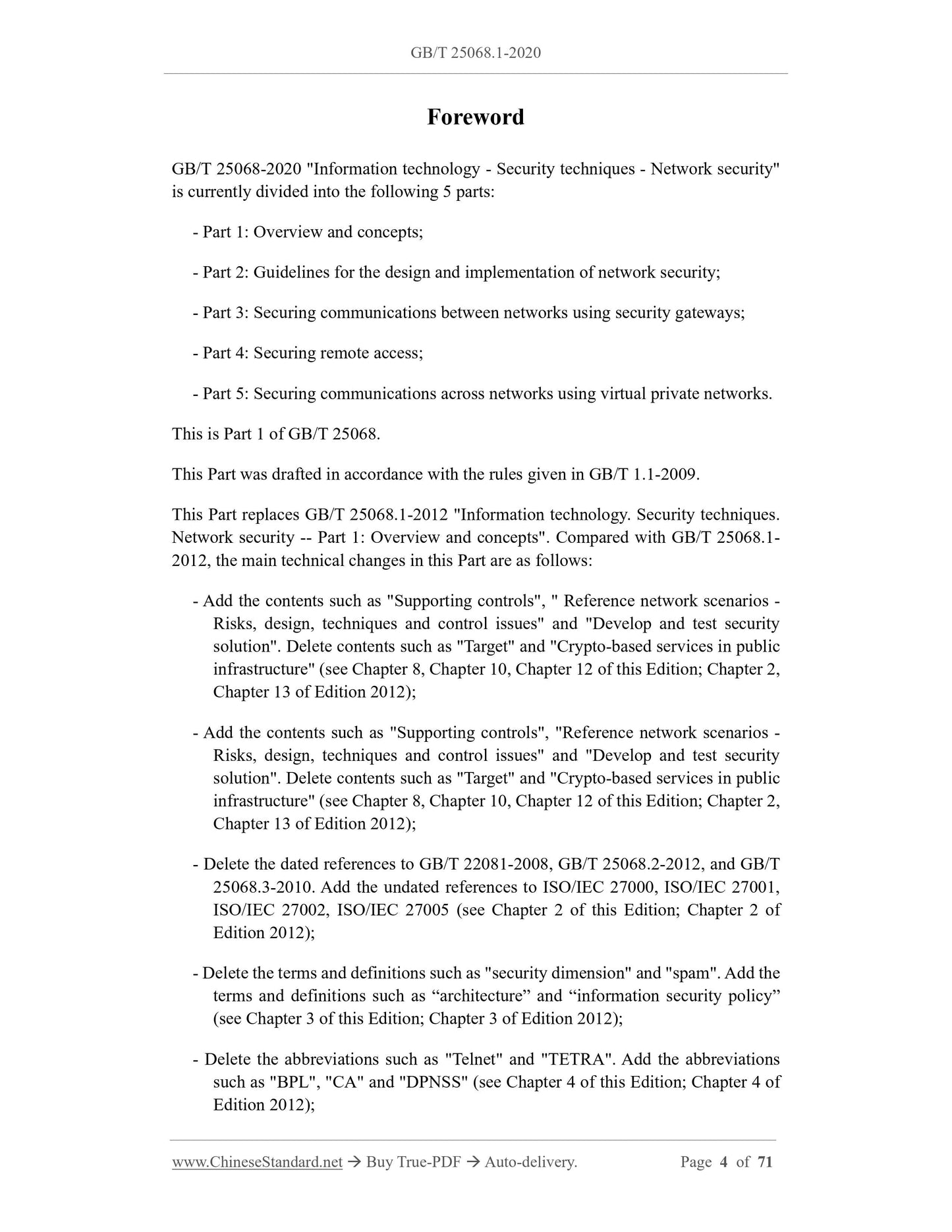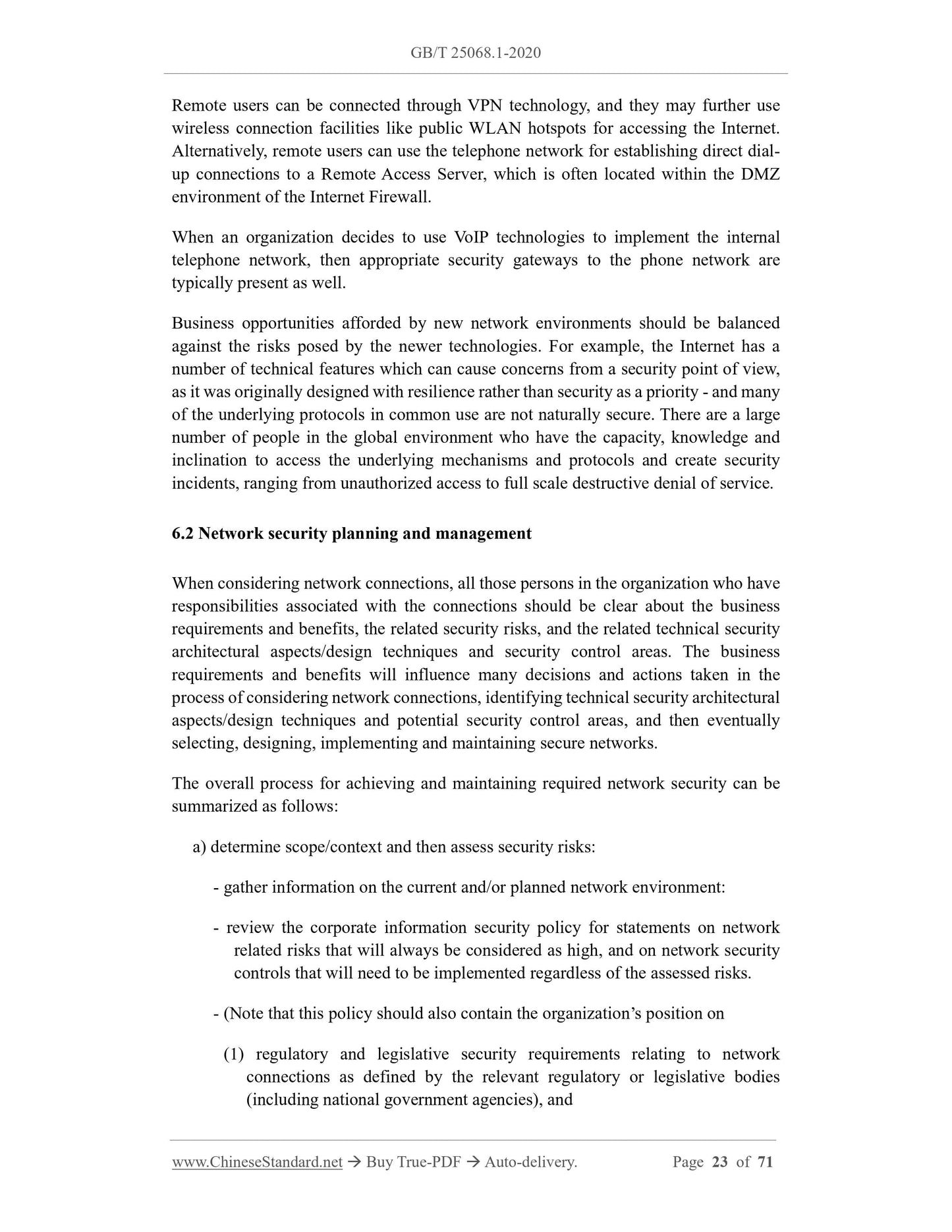1
/
of
5
www.ChineseStandard.us -- Field Test Asia Pte. Ltd.
GB/T 25068.1-2020 English PDF (GB/T25068.1-2020)
GB/T 25068.1-2020 English PDF (GB/T25068.1-2020)
Regular price
$695.00
Regular price
Sale price
$695.00
Unit price
/
per
Shipping calculated at checkout.
Couldn't load pickup availability
GB/T 25068.1-2020: Information technology. Security techniques. Network security - Part 1: Overview and concepts
Delivery: 9 seconds. Download (and Email) true-PDF + Invoice.Get Quotation: Click GB/T 25068.1-2020 (Self-service in 1-minute)
Newer / historical versions: GB/T 25068.1-2020
Preview True-PDF
Scope
This part of GB/T 25068 provides an overview of network security and relateddefinitions. It defines and describes the concepts associated with, and provides
management guidance on, network security. (Network security applies to the security
of devices, security of management activities related to the devices,
Basic Data
| Standard ID | GB/T 25068.1-2020 (GB/T25068.1-2020) |
| Description (Translated English) | Information technology. Security techniques. Network security - Part 1: Overview and concepts |
| Sector / Industry | National Standard (Recommended) |
| Classification of Chinese Standard | L80 |
| Classification of International Standard | 35.040 |
| Word Count Estimation | 45,493 |
| Date of Issue | 2020-11-19 |
| Date of Implementation | 2021-06-01 |
| Older Standard (superseded by this standard) | GB/T 25068.1-2012 |
| Quoted Standard | ISO/IEC 7498-1; ISO/IEC 7498-3; ISO/IEC 7498-4; ISO/IEC 27000; ISO/IEC 27001; ISO/IEC 27002; ISO/IEC 27005 |
| Adopted Standard | ISO/IEC 27033-1-2015, IDT |
| Regulation (derived from) | National Standard Announcement No. 26 of 2020 |
| Issuing agency(ies) | State Administration for Market Regulation, China National Standardization Administration |
| Summary | This standard specifies an overview of network security and related definitions, definitions and descriptions of concepts related to network security, and specifies management guidance related to network security (the network security of this standard applies to information security, equipment security, and Security of management activities related to equipment, applications/services and end users). Users of this standard include anyone who owns, operates, or uses the network, including senior managers and other non-technical managers or users, as well as those who have specific responsibilities for information security and/or network security, network operations, or those who are responsible for the organization. Managers and administrators responsible for the formulation of overall security plans and security strategies. In addition, it includes everyone involved in the planning, design, and implementation of cyber security architecture. This standard also includes |
Share
